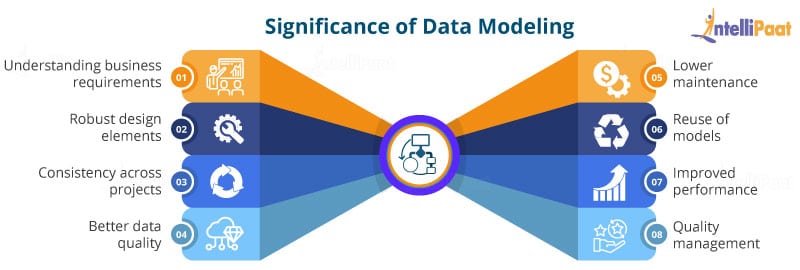5 Data Modeling Techniques In MiningPosted by Lovely Sharma on March 16th, 2020
Data modeling refers to creating a structured database in the pertaining science. Thereby, a specific model can shine through it, which lets the analyst come up trump in getting some breakthroughs. These can be groundbreaking decisions, resonating with the makeover of the business operation. Well, it is not easier than saying. One has to butcher primary and secondary sources, such as surveys, target group interviews or sampling to pick out some sense. This sense is typically called modeling, which can be the area that needs more attention or something that can improve your brand reputation. Let’s get through how data mining works, evolving intelligence or models through all these techniques:
The hierarchy is a tree-like structuring of information. If a record is assumed as the tree, various fields that consist of knowledge are its branches. The record carries many nodes or links that come through a common table or list or information. Simply say, the driven fields are interlinked. However, it is useful and the best practice to get a decision. Yet, some smart analysts hardly harness this mining technique because there is always a risk of losing some valuable knowledge that you cannot easily retrieve later.
This is an alternative of the aforementioned model. Basically, various numeric values under unique headings of distinct tables are structured. These field headings can be similarly used in a series of distinguished records. Let’s say the credentials of a school goer, like name, blood group and address would be tagged with the same titles in the records of the school, class and score-cards. This distribution of common information in multiple locations makes it easy to catch an overview.
This is like a web. Its layout looks very much similar to a hierarchical model. But, it is slightly different. Every relation is highlighted in the easiest way. Various sets of information are segregated into parent and child records, which are intelligently linked with one another. Let’s say the details of an employee, products and users are put in a network, wherein organisation’s inventory and ‘transaction sheet’ are titled as two ‘parent’ directories. Both directories will tap the information about the three different objects (i.e. an employee, products and users) simultaneously.
This model consolidates objects. Each object has its own instances (features) and methods. Basically, it address ‘what’ (as, what could be the objects in a sales report) and then, ‘how’ (as, what methods or techniques should be picked up to administer the problems). This kind of modeling trails relational database model.
Also called ER model, the analysts show graphical presentation of the objects and their relationship. It can be in a graph, chart or any other visual format that could be easily understood at a glance. These are five techniques that assist in getting out more from the ‘just a table/file/sheet’. Upon harnessing any of these methods, an overview shapes up to catch its insight. You can go deep with their intelligence, which is prominently disrupting every industry, every domain because the foundation of doing needful and transformation starts from there. Even, you have many opportunities to come across redundancy and omission, which often interferes with the accuracy. These come many steps in these processes that filter out inconsistencies to reach what is the best alternative for the makeover. Besides, you have a proof or facts to prove your decisions right, which your stakeholders often appreciate. So, the best is right there in the silos of data. You can put yourself out there, selecting what fits the frame of your business scenario for predictive or descriptive analysis. This is what mines the breakthroughs that you need to scale up and up consistently. Like it? Share it! |



